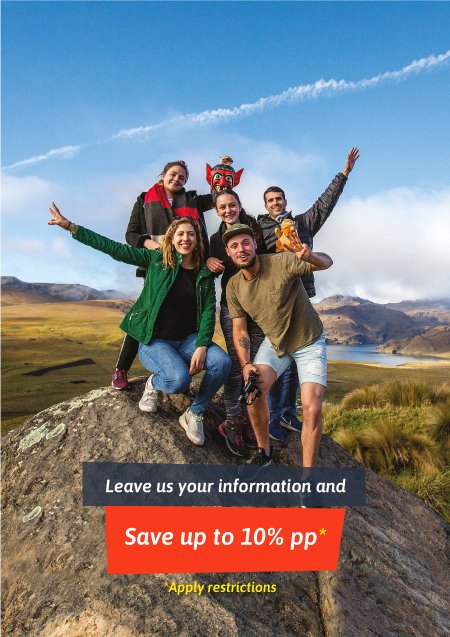Many people have been wondering, “how far is Papallacta from Quito?” and to address this common question, we’ve prepared the following blog just for you.
Papallacta, a humble little village named after potatoes (papa-llacta means potato land, in Kichwa) is a common household name in Ecuador, and not because of its potatoes. This high-altitude (3,300 meters above sea level / 10,827 feet) town is a popular destination for visitors and locals alike due to its natural, volcanic, thermal baths.
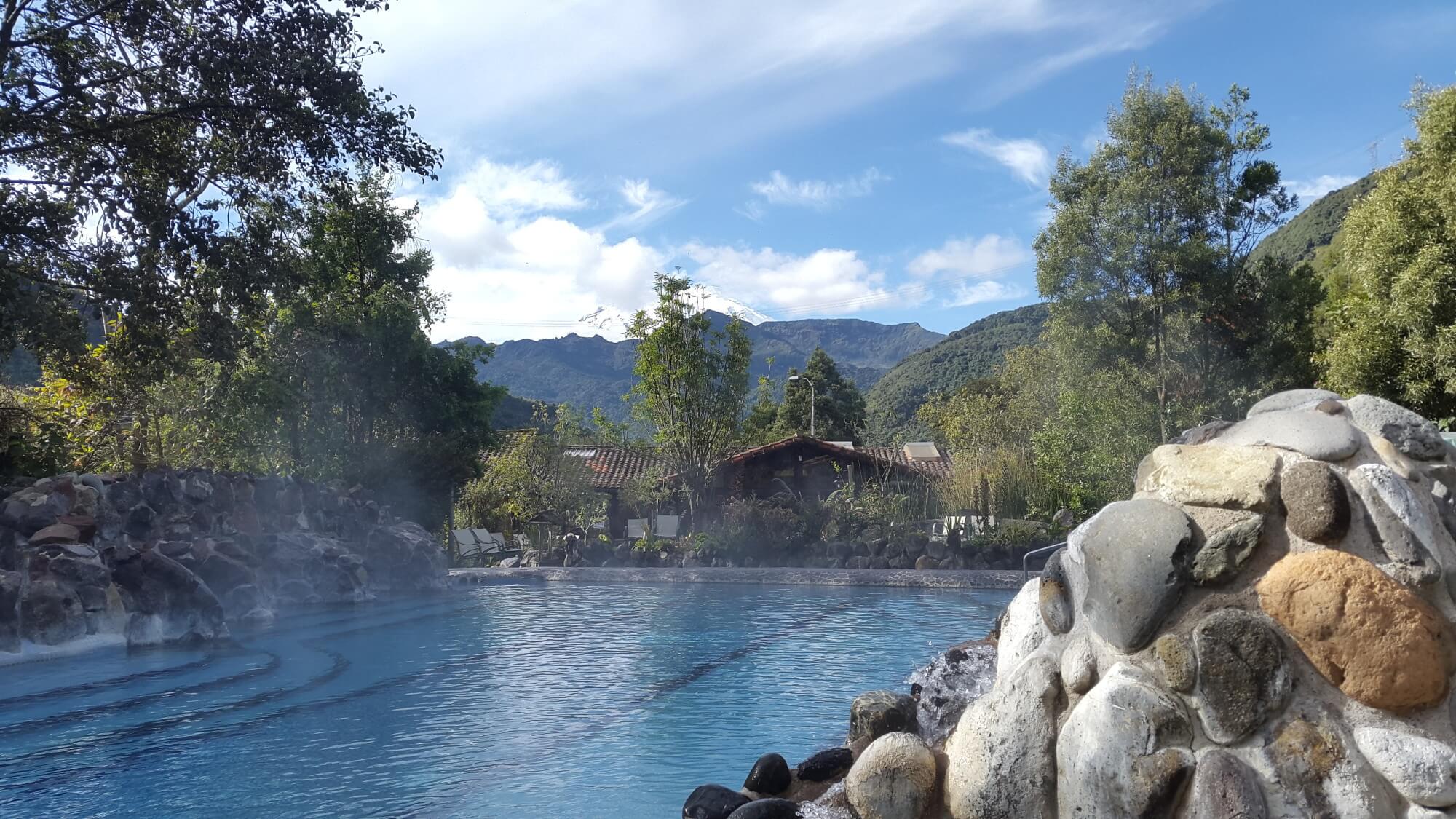
Where is Papallacta?
If you’re starting in Quito, Papallacta is an easy hour away, by car or bus. If you’re with a good driver in a modern car (the increase in altitude often causes older cars to suffer and go at snail pace), you can get there in as little as 45 minutes. Papallacta is located 67 kilometers east of Quito, nestled in the Ecuadorian Andes and in the direction of other popular destinations like Baeza, Tena, and Misahuallí. You can also get to Baños along this route.
At 3,300 meters above sea level, you can expect fog, drizzle and cold temperatures, which makes it a perfect place to appreciate the thermal baths. Quite often, the sun comes out, exposing breathtaking views of Volcano Antisana and the surrounding high-altitude cloud forest. The area is rich in bird life, and also home to the Spectacled Bear.
There’s really no reason why you shouldn’t visit this nearby destination, especially since you’re guaranteed a relaxing, Ecuadorian experience, for a very affordable price.
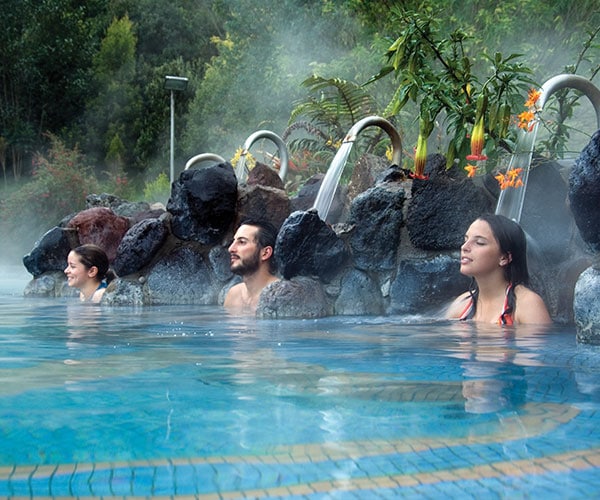
What to do in Papallacta?
Considering how close Papallacta is from Quito, you should definitely try to squeeze a day there, or at least an evening, into your itinerary. This is especially convenient if you’re headed to Tena or the deeper Amazon from here. Even if you plan to return to Quito that same day (or night!), a visit to Papallacta is worth your while.
Thermal baths
As you enter Papallacta, you’ll notice a few different signs directing you to various thermal baths.
The most popular establishment is called “Termas de Papallacta,” which offers clean pools in an aesthetically pleasing setting. The pools are set in a beautiful garden and you can sit along natural rocks. You also have access to changing rooms and bathrooms – as well as a restaurant – all for $9 per adult. Try to visit the baths on a Monday or Tuesday, if you can, Friday to Sunday tends to be quite busy.
If you want a fancier experience and have the money for it, head to the Termas de Papallacta SPA (right next to the regular $9 entrance for the pools), which is cleaner and more exclusive. Entry is $22 per person and you get a swimming cap. There, you can receive massages and other spa treatments. Note: this is still at Termas de Papallacta! Just the fancier option.
You can also stop at one of the other establishments on the road as you enter Papallacta. The entry cost for these may vary, and some even include lunch or dinner, but you can expect to pay far less those places than at the Termas de Papallacta. (I personally like the Termas de Papallacta, however the entry price is increasing at roughly $0.50 cents every 6 months to a year…)
Eat fresh trout
Much like swimming, lounging in natural hot springs burns calories and, once you get out of the water, you’ll likely be ravenous. Good news! This region of the country is known for its fresh trout.
You’ll find a string of small restaurants in Papallacta, near where all the hot springs are located, serving soup and various trout dishes. A personal favorite: trucha al ajillo (trout in a delicious garlic sauce).
Virgen de Papallacta to Termas de Papallacta
Like hiking? Consider doing the hike from the Virgen de Papallacta, which you pass on the way to Papallacta. The Virgen de Papallacta is basically the highest point along the highway and there’s a shrine with a virgin in it (Hard to miss, unless it’s really foggy). The route takes you from there to the entry of the Termas de Papallacta.
Depending on your pace, this hike takes about 5-6 hours and covers 10.5 miles (nearly 17 km). It is a moderately difficult hike, especially if you aren’t acclimatized, but very do-able for most hikers. Make sure to bring rain and sun protection, as well as layers for the cold. Keep in mind that to do this hike, you’ll have to get dropped off and start at the Virgen de Papallacta, not the Termas de Papallacta.
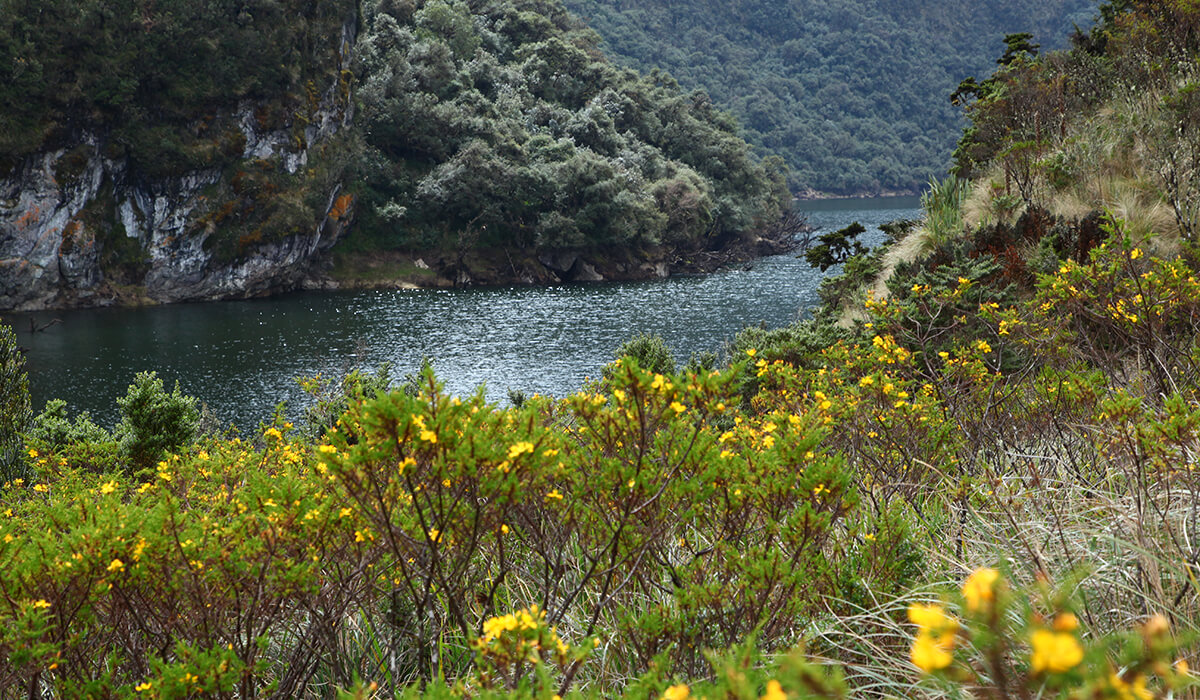
Fastest ways to travel from Quito to Papallacta
To get from Quito to Papallacta, the quickest way is by car. Rent a car ($30-$100/day) or hire a taxi or Uber ($60-$80 one way – divided by 4 passengers and it’s pretty decent but still way more expensive than buses), and you’ll be there within the hour. You can easily make this a day trip, leaving early in the morning, hiking around the area, dipping into the thermal baths, having lunch and then heading back before dark.
You can also get to Papallacta from Quito by bus, though it’s a bit of a hassle. Though you’d be headed east from Quito to Papallacta, to get on a regular bus you’d first have to travel to Quito’s southernmost bus terminal, Quitumbe, which takes about an hour from the center/north of the city.
From Quitumbe, grab a bus to Baeza or Tena. If taking bus to Baeza, once you arrive, you’ll need to take another bus to Tena that passes by Papallacta. If you got on a bus that goes all the way to Tena, just get off at Papallacta.
Note: These buses will drop you off at the entrance to the town. You’ll still need to hike uphill for about 45 minutes to get to the various hot springs, including las Termas de Papallacta.
[Honestly, just skip all this hassle and hop on the Wanderbus – more info below].
Alternatively, from Quito, head down to Cumbaya or Tumbaco and grab a bus that goes to Tena.
There are a few, but they are sporadic and you might need to ask around – it’s not as straightforward as a bus terminal. I would try the bus stop in front of the Supermaxi in Cumbaya since many buses stop there, otherwise at the Santa María supermarket in Tumbaco.
If you’re starting in Tena, just get on a bus to Quito and hop off in Papallacta.
Regardless of how you’re planning to get to Papallacta, remember to take some warm clothing and rain protection. It gets quite chilly, especially after the warmth of the thermal baths.
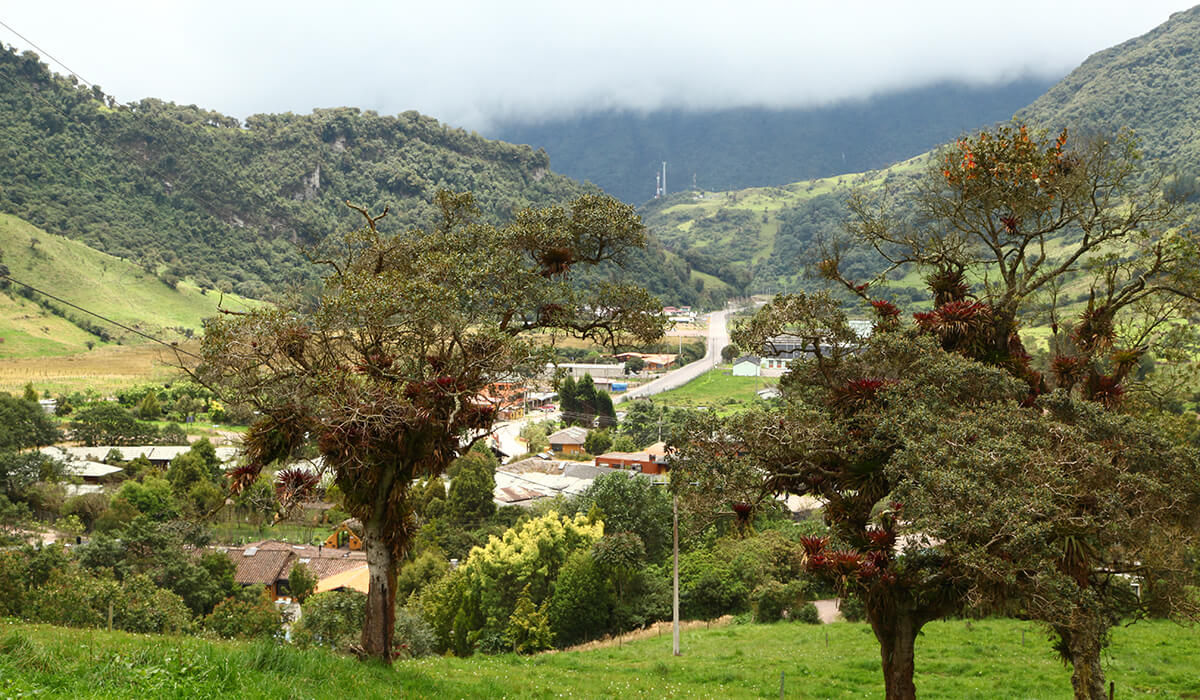
Wanderbus Ecuador
An alternative to the taxi and regular bus options that you should definitely consider is the Wanderbus. The Wanderbus departs from Baños on Wednesday, Friday, and Sunday and one of its stops is Papallacta thermal springs, and BONUS entrance is included in your Wanderbus Pass! The bus will take you straight into town so you don’t have to hike from the entrance – you can get straight to relaxing in the natural hot springs.
The Wanderbus is a convenient mode of transport if you’re keen on exploring Ecuador in a flexible way. As a hop on, hop off bus, you can adjust your itinerary as you like, and are guaranteed a ride to the next stop for the selected Wanderbus pass. Specifically, the Wander Pass Express and the Continga Pass take you straight through Papallacta and combine well with a trip to Tena and Baños.
Comment below if you have any specific questions on how far is Papallacta from Quito, we can help you with, and happy wandering!
